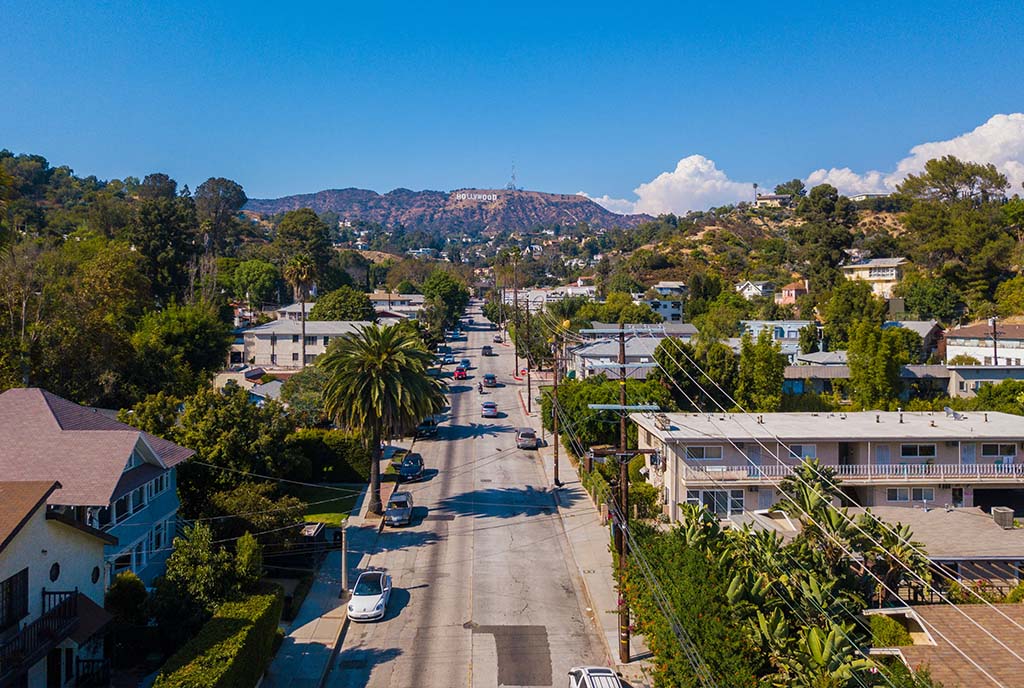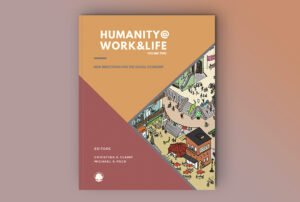
At the end of 2019, the California Public Banking Act (AB 857) opened the doors for local governments to establish public banks. Just months later, the pandemic brought the world to a standstill, slowing progress. Yet, in the years since, this once-radical idea has quietly gained traction, reshaping the conversation about who controls financial power. In today’s unpredictable political and economic climate, local control isn’t just practical—it’s essential for advancing the public good.
Building a movement of this scale takes time. Progress has been slow, as institutional change often is. However, the ultimate impact could be profound. Public banks offer the promise of shifting economic power back to local hands, reducing reliance on federal and for-profit backing. This is no minor reform. It’s about transforming how public funds work to serve our collective benefit, not individual gain.
[The Bank of North Dakota] channels taxpayer dollars back to the neighborhoods they’re meant to uplift, not into shareholders’ pockets.
By empowering cities to establish community-owned, community-grown banks that focus on local needs above corporate profits, public banks offer a pathway to cut municipal costs, expand credit access, and drive sustainable growth—all while challenging Wall Street’s control of public dollars.
A Proven Model
California is not the first state to consider creating public banks as financing tools. The Bank of North Dakota (BND)—a unique institution that grew from the agrarian populism of the early 20th century, now with a 100-year-plus track record of operations—proves what’s possible. In a state with an economy about the size of Fresno, CA—a Central Valley city home to just over 545,000 people—BND achieved an 18.2 percent return on investment in 2023.
By partnering with community development financial institutions (CDFIs)—mission-driven lenders focused on underserved communities—and community banks, BND channels taxpayer dollars back to the neighborhoods they’re meant to uplift, not into shareholders’ pockets.
Take BND’s partnership with Dakota Business Lending (DBL), a CDFI that helped finance a $136,000 expansion project for a youth music academy. By leveraging its profits to reinvest locally (as well as accessing a Community Match program funded by local governments), BND was able to “buy down” the borrowing cost, effectively lowering the loan’s interest rate from 7.37 percent to 3.5 percent over 10 years.
BND and DBL also helped a startup gym for children with disabilities and functional needs. The new business’s collateral value didn’t meet traditional lending requirements, but by leveraging a Small Business Administration Community Advantage guarantee, the partnership ensured a workable loan for the borrower, distributed financial risk, provided steady returns for the lenders, and made a project that conventional banks would have rejected financially viable.
BND’s formula isn’t magic—it’s a business model designed to work for the people: low overhead; no shareholder payouts; and a diversified pipeline of profits from participation (shared) loans with CDFIs and community banks, municipal infrastructure financing, and agricultural lending.
By keeping dollars circulating locally and maintaining financial discipline, BND funds impactful projects like these while delivering a stellar return on equity. This model is what California’s emerging public banks hope to replicate after launch.
Putting Public Dollars to Work for Public Good
Speaking at the Opportunity Finance Network conference in Los Angeles last October, Steve Dusek, CEO of Dakota Business Lending, captured the broader vision: “When a public bank supports small-business financing, it’s about more than one transaction, it’s about building a durable local economy and forming partnerships that make a difference. Small businesses aren’t overlooked for failing to meet big-bank criteria. Public banking partnerships let us serve communities in meaningful, lasting ways.”
The vision for public banks is to act as wholesale lenders that can bridge credit gaps, reduce borrowing costs, and empower local institutions to meet community needs. Public banks in California will amplify the impact of CDFIs and local lenders, creating a ripple effect that turns every dollar into a tool for sustainable growth.
The financial toll of for-profit banking on California’s cities is staggering, with billions lost yearly in interest payments and fees to faraway corporate banks.
So, how does this work? When a public bank accepts deposits, those dollars don’t just sit idle—they multiply their impact. Through fractional reserve banking, a public bank can lend out up to 10 times the amount of its deposits. For example, $100 million in deposits could support up to $1 billion in loans. This isn’t unique to public banks—private banks do the same thing—but instead of funneling profits back to Wall Street shareholders, a public bank reinvests locally.
Profits that sustain public banks are generated from solid, revenue-producing projects like municipal infrastructure loans and business participation lending, which can help finance community initiatives like affordable housing and green energy. Public banks then leverage their returns to back high-impact projects that private banks might sideline, sparking economic opportunity across the state. It’s about putting public dollars to work for public good and building stronger, more resilient communities in the process.
The Nature of the Challenge
The financial toll of for-profit banking on California’s cities is staggering, with billions lost yearly in interest payments and fees to faraway corporate banks. The city of Los Angeles alone reports that it spends over $1.5 billion annually on finance fees and debt service.
This money leaves our communities and doesn’t come back, but public banks can reclaim these funds for local use, keeping revenue within our cities and breaking the cycle of financial dependency on Wall Street.
The need is undeniable. According to the nonprofit Small Business Majority, around 41 percent of California’s small businesses, especially those owned by entrepreneurs of color and women, struggle to access the capital they need for growth. One study of 104 California small-business owners found that they were paying, on average, an astonishing 94 percent APR (annual percentage rate, the yearly cost of borrowing money). Public banks, in partnership with CDFIs, can close this gap by substituting predatory loans with affordable financing designed for community resilience.
Sign up for our free newsletters
Subscribe to NPQ's newsletters to have our top stories delivered directly to your inbox.
By signing up, you agree to our privacy policy and terms of use, and to receive messages from NPQ and our partners.
A Movement Gains Momentum
Public banks, working with CDFIs, have the power to significantly expand community impact in affordable housing, small-business growth, and green energy. California’s public banking movement, backed by grassroots advocacy and landmark legislation, has reached a pivotal stage. For communities of color facing stark credit gaps, this model can bridge financial divides that have prevented Black communities, Indigenous communities, and communities of color from building generational wealth.
Cities and regions in the California Public Banking Alliance (CPBA) in Los Angeles, San Francisco, Sacramento, and the San Francisco East Bay are moving public banking initiatives forward.
By partnering with local CDFIs, community banks, and credit unions, public banks share risk, expand lending power, and support small businesses.
In San Francisco, the Board of Supervisors approved business plans for a Green Bank to evolve into a full-fledged public bank. In recent elections, Jackie Fielder, the cofounder of the San Francisco Public Bank Coalition, was elected as a district supervisor, showing continued support for establishing the municipal bank. In the East Bay, multiple city governments are working together to capitalize on a regional public bank. Meanwhile, in both Los Angeles and Sacramento, city councils have approved funds to hire consultants to draft public bank feasibility studies and business plans.
In a five-part report series, the nonpartisan research organizations Jain Family Institute and Berggruen Institute explored the structural, financial, and operational feasibility of the Los Angeles Municipal Bank, showing how it could fund affordable housing, partner with Los Angeles Department of Water and Power (the city’s municipal utility), and return profits to taxpayers, offering a blueprint for achieving these goals.
From feasibility studies to capitalization plans, these efforts offer concrete steps toward a financial system that centers California’s diverse communities. By partnering with local CDFIs, community banks, and credit unions, public banks share risk, expand lending power, and support small businesses often ignored by big banks.
California isn’t alone in this fight. In New York, CDFIs are championing public banking legislation to tackle similar inequities. Melissa Marquez, CEO of Genesee Co-op Federal Credit Union, works alongside a coalition of other mission-driven CDFIs in cities like Rochester and New York City, where big banks have long ignored neighborhoods most in need of fair credit. Institutions like Lower East Side People’s FCU and Neighborhood Trust FCU are united in their advocacy.
Speaking on the same panel as Dusek at the Opportunity Finance Network conference, Marquez offered her perspective: “Public banking isn’t just about creating a new institution. It’s about building the infrastructure that strengthens our work and bridges financial divides that have stifled Black and Brown communities for generations.”
Both states share a common goal: transforming local economies by keeping capital in the community, where small businesses thrive, neighborhoods stabilize, and financial power shifts back to the people.
Public banking is also making waves in perhaps unexpected places. In Florida, elected officials are pushing for a “Sunshine Freedom Bank”—a state bank to safeguard financial independence, while Tennessee is exploring its own state-owned bank model to support local communities.
These efforts signal a broader, bipartisan recognition that public banks can be a game-changing tool for communities nationwide to reclaim financial control.
CalAccount: Universal Access to Banking
In California, financial reform is also taking shape through CalAccount, the nation’s first state-led banking initiative to provide universal access to financial services. The California State Legislature established the CalAccount Blue Ribbon Commission under the California Public Banking Option Act (AB 1177) to assess the program’s feasibility. Envisioned as a state-sponsored, no-fee, federally insured checking account, CalAccount seeks to provide a lifeline for the nearly eight million unbanked and underbanked Californians shut out of mainstream banking.
In its July 2024 report, the commission confirmed that CalAccount isn’t just viable; it’s critical to addressing financial exclusion by addressing the systemic exploitation of the working poor. For fast-food workers and others who lose $6 in financial services fees for every $100 check cashed, it offers an alternative to predatory services. State Treasurer Fiona Ma has endorsed the program, and a 2024 report from HR&A Advisors estimates that CalAccount could save Californians up to $3 billion annually in fees while injecting up to $5 billion into local economies.
This isn’t just about financial inclusion; it’s about challenging a corporate banking system that extracts billions in overdraft fees while delivering little in return. Paired with public banking initiatives, CalAccount represents a blueprint for how states can reclaim financial power and build economies that serve everyone.
Setting a National Example
The bottom line: Finance doesn’t have to exploit—it can empower.
The goals are to turn public dollars into public power, close the wealth gap, and build local community-based economic resilience. Public banking aims to do just that by transforming the rules of finance to give people priority over profits.
And in times when federal priorities are uncertain, local control brings stability by funding what matters most—housing, small businesses, sustainable growth, and underserved communities—without relying on unreliable external support.
As California’s public banking vision takes shape, it can help ignite a movement, inspiring similar efforts across the country. By 2030, we could see a thriving network of public banks working hand in hand with CDFIs and local institutions become a model for addressing financial inequity throughout the country.








